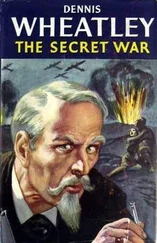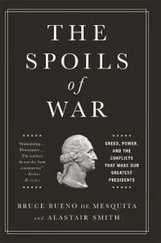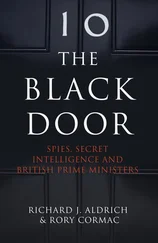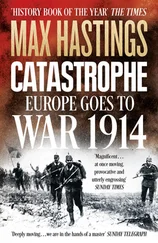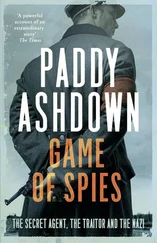It was an even larger stroke of fortune that Germany’s commanders sustained their dogged belief in Enigma’s inviolability. Early in the 1930s the head cryptanalyst of Göring’s Forschungsamt cipher unit, Dr Georg Schröder, asserted passionately: ‘the whole Enigma is garbage!’ No heed was taken of his warning, which was deemed only relevant to the commercial machine, which lacked a plugboard. In October 1939 Lt. Col. Ruzek, former head of Czech cryptanalysis, revealed to German interrogators that the Poles had been working with the French to break Enigma traffic. In captured Polish files, the Nazis discovered three 1938 plain-language translations of signals from a German cruiser in Spanish waters. Polish PoWs were exhaustively interrogated in attempts to discover how these messages had been decrypted, but the Abwehr drew a blank: almost all the men who knew the answers were at that time beyond their reach. OKW/Chi’s cryptanalysts in Berlin felt intensely frustrated that, while they were supposedly responsible for ensuring the security of the Wehrmacht’s communications, they were expressly forbidden to conduct tests on breaking Enigma traffic. They nonetheless believed the system institutionally safe, and argued that occasional signals could only be broken if dispatched by careless operators who neglected procedure. Even in 1946 the Wehrmacht’s chief cryptanalyst, Wilhelm Fenner, maintained stubbornly: ‘The Enigma was regarded as antiquated, but it was secure when properly used.’
It is possible to identify several moments of the war at which British blunders could have enabled the Germans to recognise that their ciphers were compromised, and plug the gusher of intelligence flowing from Bletchley Park. On 24 August 1941, Churchill made a BBC broadcast in which he alluded to explicit numbers of Jews known to have been murdered by the SS behind the Eastern Front. The Germans noticed, and within days Oberstgruppenführer Kurt Daluege issued an order that details of such killings should no longer be mentioned in radio traffic: ‘The danger of enemy decryption of wireless messages is great. For this reason only non-sensitive information should be transmitted.’ One consequence of Churchill’s slip was that when in October 1942 the Foreign Office compiled a report on known German atrocities, especially those committed against Jews, this was not publicly released, to avoid any new risk of compromising intelligence sources.
It was remarkable that the German high command failed to draw far-reaching conclusions from Churchill’s August 1941 words, and likewise a year later when German interrogation of Allied prisoners revealed that Montgomery’s Eighth Army had been expecting the Afrika Korps’ attack at Alam Halfa in North Africa. Early in 1942 also, Dönitz became acutely suspicious that the Allies were monitoring his communications with U-boats. He was persuaded that his fears were groundless by British carelessness with their own convoy codes, which were being broken by the Kriegsmarine’s decryption service, the B-Dienst. If Enigma was indeed insecure, the admiral reasoned, the British would have learned about this yawning chasm in their own security: a nation clever enough to crack U-boat signals would employ better codes of its own. The U-boat chief was careful enough to introduce the four-rotor Enigma, but insufficiently so to question the fundamental basis of the system.
Potentially the most dangerous threat to the Ultra secret also came in 1942. On 5 May the Australian freighter Nankin sailed from Fremantle for Calcutta with a cargo of explosives, 180 crew and 162 passengers. In the Indian Ocean early on the morning of 10 May, a small floatplane circled the ship. Soon afterwards its parent, the German raiding cruiser Thor , closed in and opened fire. Nankin signalled ‘Raider sighted,’ and her captain jettisoned the confidential books before surrendering an hour after the first shot. The passengers and crew were transferred to Thor and its accompanying supply ship, along with hundreds of sacks of mail. Among these, the Germans identified a consignment from the Combined Operations Intelligence Centre at Wellington, New Zealand. Its contents included a ‘Most Secret’ summary for the period 21 March to 20 April, largely based on Ultra material, which gave the positions of every known Allied and enemy warship and merchant vessel in the Pacific and Indian Oceans. With criminal carelessness, these documents had been dispatched not by hand of Nankin ’s captain, but instead with the general mail.
Even though the COIC data was well out of real time, imaginative analysis of the intelligence summary by the Abwehr would have shown the Germans that some at least of their ciphers, as well as those of the Japanese, were compromised. Such scrutiny appears never to have taken place. The Thor ’s captain saw no special urgency about sending the captured documents to Berlin. Only at the end of July, after the raiding cruiser’s supply ship docked at Yokohama, did Germany’s naval attaché in Tokyo receive the COIC papers. A further month elapsed before Berlin authorised him to pass the documents to its Asian ally. Thereafter, the Japanese navy changed its main code, so that the US Navy lacked ‘real time’ decrypts to empower its operations during the 11–12 October Battle of Cape Esperance, the 26 October Battle of Santa Cruz, and the 13–15 November Guadalcanal actions.
It would be fanciful to suggest that the Nankin captures thus altered the course of the naval war, because the code alteration was part of a regular routine: the Japanese still doggedly refused to acknowledge that their entire communications system was vulnerable. But if they had read the Allied COIC documents soon after the Germans got their hands on them, and had possessed a more sophisticated capability for assessing intelligence, they would have changed their ciphers weeks, instead of days, before launching their June assault on Midway, with momentous consequences. The British do not appear to have told the Americans about the Nankin loss. This may have been because they suffered an attack of well-deserved embarrassment about a major breach of security. It was the same story when the second of two copies of the Japanese Purple cipher machine, presented to the British by their American creators, was dispatched to the Ultra team in Singapore by freighter. It is known to have left Durban in December 1941, but thereafter vanished without trace, its fate unknown from that day to this.
No Whitehall correspondence concerning the Nankin has thus far been found in British archives, and it would be unjustified to build too high a tower of speculation around its story. The Allies escaped significant consequences from their blunder – and from the others cited above – because the intelligence systems of Germany and Japan lacked the coherence and imagination to profit as they should have done from their haul of Allied secrets. One further critically dangerous moment should be mentioned: in November 1942 the Germans swept across unoccupied France. Among those whom they took into custody in Vichy were three Poles who had served in Gustave Bertrand’s codebreaking department since 1940, and before that had been engaged in Poland’s own cryptographic operation. In March 1943, two such prisoners were interrogated by German sigint experts in the presence of an Abwehr officer. Had the men told what they knew, or could have surmised, about the Allies’ progress in cracking Enigma, the worst could have happened. Fortunately, before being questioned the Poles were briefly alone together, and coordinated explanations which were accepted: that while some traffic had been briefly broken in 1938, improved German systems thereafter closed the breach. Here were two more people to whom the Allies owed a debt for their role preserving the Ultra secret. Cleverer men in Berlin and Tokyo might have made much of the material and prisoners that fell into their hands, and abruptly halted the music for the Allies’ wondrous dance across the ether.
Читать дальше

